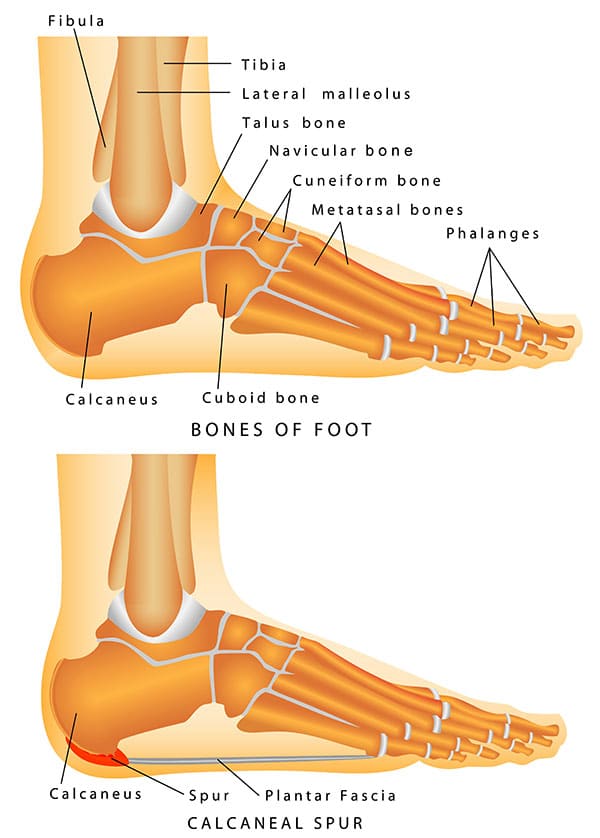Bone Spurs

An outgrowth of a bone occurring along the edges of the bone is known as a bone spur. Bone spur or osteophyte are mostly found in joints but can exist in any bone. They are also found where ligaments, tendons or muscles attach to the bone. Bone spur occurs mostly on the lower back (lumbar spine), neck (cervical spine), hip, shoulder, heels, and knee. Other areas where this can occur are at the toes, temporomandibular joint (TMJ), midfoot, wrists and hands.
Causes
Rubbing of a bone for a long period of time or continuous stress in the bones are some of the reasons for the cause of bone spurs. A layer of cartilage is present along the edges of the bones which comes together leading to the formation of a joint. The cartilage layer gets worn away with osteoarthritis which leads to the rubbing of the bones against each other. A new bone will be formed as the response of this action.
Plantar fasciitis is a medical condition associated with bone spurs. It is an inflammation of the connective tissue at the bottom of the foot to the heel bone. Ankylosing spondylitis and DISH (Diffuse Idiopathic Skeletal Hyperostosis) are the two inflammatory disorders which affect the ligaments in the body and causes osteophyte in the spine.
Symptoms and signs
The most common symptom of osteophyte is pain and loss of normal motion in the joint and occurs in the hands, feet, knees, hips and shoulders. This pain is caused due to the rubbing of the bones against the ligaments and gradually it leads to a ligament tear.
If bone spur occurs in the spine, it causes pain and loss of normal motion. Furthermore, it pinches the spinal cord or the nerves. Radiculopathy occurs when the nerves are pinched in the spine. This can cause tingling, numbness, pain and also weakness in the legs or arms.
Diagnosis
A physician begins with the physical and medical examination where the results are noted and he/she recommend the patients take X-rays and obtains imaging studies in order to diagnose osteophyte. X-rays shows the formation of bone spurs and the areas where it is affected. An MRI scan will be required if there is a ligament tear or to access for spinal cord compression.
Treatment
Treatment is based on the symptoms and if pain is experienced by the person then it can be treated using proper medications. They help reduce pain and inflammation caused by osteophyte.
Physical therapy is recommended by the doctor to help with the symptoms related to bone spurs. This cannot remove bone spurs but can give a relief of the pain and help with some of the other symptoms associated with bone spurs. Physical therapy helps to increase the strength of the surrounding muscles in the affected area and the motion of joints. Stretching exercises, massage, ultrasound treatment, are included in physical therapy. A physical therapist or a doctor provides the patient with few simple exercises to perform at home.








